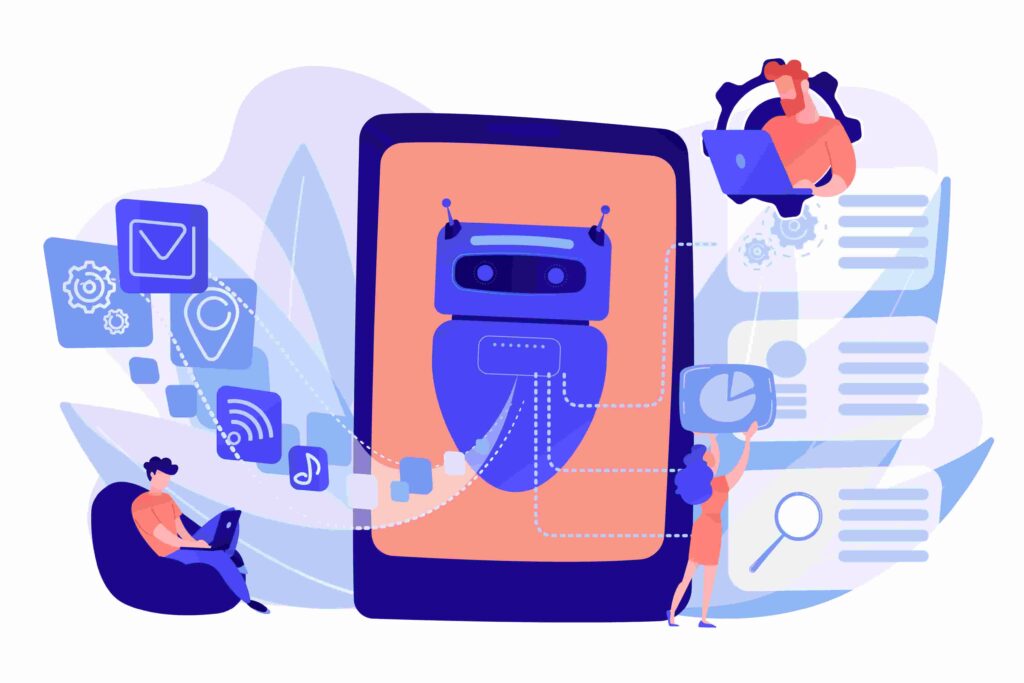Help desk tools are more and more important, as they ensure fast response to customer demands, offering features to organize tickets from start to finish.
Therefore, read this article to understand what help desk is, its benefits, and how it can be used to support demand management.
What is help desk?
Help desk is a ticket software solution for customer service activities. It offers support, solutions, and explanations for failures and technical problems in pre- and post-sales stages.
This system centralizes user requests, providing service teams with an automated ticket management system; this way, customers don’t have to repeat their requests to different departments.
It also ensures a better control to managers, reduces the chance of errors, and allows staff to define ticket priority levels.
What is the purpose of help desk?
Help desk tools are mainly used for three purposes:
Ticket generation
A help desk system centralizes and organizes ticket generation when customers contact the support service of a company with questions or problems. It ensures fast service and stores customer request history for technicians and other teams.
Unified view of information
A help desk solution also stores information in a single location. It helps define service strategies and priorities and provides a more natural response flow by facilitating problem escalation to the right team.
Organization of service tickets
Help desk tools offer features that organize and track service tickets, allowing service staff to classify, assign, and track tickets, so they can be escalated to a specialist team. This way, response time is reduced, increasing the quality of customer support.
How help desk systems work
Help desk systems can be focused on external audiences, internal audiences, or both. However, regardless of their functionalities, it’s important to understand how it works. See more details below:
1. Receipt of customer requests:
The process begins when the service team receives customer requests, such as specific technical problems, user questions, and service requests. Also, tickets can originate from different channels, such as email, telephone, chat, or online forms.
2. Ticket logging and categorization:
As soon as requests are received, they are logged in the help desk system. Every request is categorized according to the nature of the problem or type of service requested. This process is crucial for efficient screening, so requests can be escalated to the right team or technician.
3. Prioritization and assignment:
In order to ensure a strategic approach to problem resolution, requests are prioritized according to urgency and impact on users and operations.
After that, they’re assigned to qualified teams or technicians. This way, the most critical demands are addressed first, minimizing impacts on users and maintaining productivity.
4. Tracking and resolution:
During the whole process, the help desk system allows continuous monitoring of request status. Support teams can interact directly with users, request additional information, and provide updates of service progress.
Also, resolution may involve the application of immediate solutions, remote access for corrections or, in more complex cases, escalation to higher levels of support.
5. Documentation and knowledge base:
A critical action is documenting every interaction with customer and solution applied. Such information contributes to building an internal knowledge base.
A well-managed knowledge base allows the support team to access historical information and resolve recurring problems more efficiently. It can also be shared with users, allowing them to resolve common problems by themselves.
-
Feedback and continuous improvement:
After problem resolution, help desk systems allow easy collection of user feedback. Feedbacks are crucial to assess the effectiveness of support, identifying areas for improvement and adjusting procedures as required. Continuous data analysis contributes to continuous improvement of help desk services.
-
Reporting and metrics:
For efficient management, a help desk system offers reporting features and metrics, allowing team performance assessment, identification of request patterns, and strategic decisions based on concrete data. All these actions contribute to resource optimization and adaptation of the organization’s specific needs.
Why customer support software solutions are so important?
Help desk tools are important because they contribute to successful customer support operations and customer satisfaction. After all, they allow companies to:
- Provide support to customers, ensuring fast resolution of problems and requests;
- Help manage demands, organizing interactions and allowing analysis and identification of improvements;
- Provide a differentiated service, demonstrating commitment to customer satisfaction and generating loyalty.
Therefore, this software tool is important not only to offer technical support and resolve problems, but also to perform strategic assignments that are essential for a successful business.
Benefits of investing in a help desk system
A help desk tool brings several benefits to the customer service department, as it can:
- optimize interactions with customers;
- standardize responses and solutions;
- reduce response time;
- reduce manual work;
- screen services;
- answer more customers in less time;
- centralize several channels on a single platform;
- improve the cost-benefit analysis of customer service.
Best help desk tools
Milvus
Milvus HelpDesk is a customer support software tool with the exclusive OneClick technology. It allows users to generate tickets directly from the desktop, ensuring fast, convenient, and easy service.
This help desk system with integrated WhatsApp feature allows ticket generation and tracking through different communication channels, such as email, web, chat, app, telephone, and monitored device. It also offers automatic SLA management, so the IT department can focus on more strategic ticket resolution.
Milvus features:
- ChatGPT integration;
- SLA configuration;
- Ticket reporting;
- Notification via email;
- Comprehensive ticket management;
- Project management;
- Personalized reports.
Zendesk
Zendesk is a help desk software tool that offers ticketing system, knowledge base, help center, collaboration tools, and much more.
Features:
- Comprehensive support ticket system;
- Email, voice, SMS, and real-time chat support;
- Customizable and shareable dashboards.
LiveAgent
LiveAgent is a help desk system that combines live chat, ticket management, and customer service automation.
Features:
- Ticket system with multichannel support;
- Customer portal;
- Automated callback.
Desk Manager
Desk Manager is a help desk platform for customer service used to organize tickets and optimize support management.
Features:
- Additional dashboards;
- Ticket reports;
- Scheduled call;
- Service map.
Movidesk
Movidesk offers a comprehensive customer service structure that can be adapted to the company’s needs and ticket flow.
Features:
- Ticketing system;
- Customer portal;
- Customized fields.
Zoho Desk
Zoho Desk is a cloud-based help desk tool with contextual artificial intelligence.
Features:
- Multichannel ticket management;
- Workflow automation;
- Help center, knowledge base, and communities;
- Intuitive view of open tickets;
- Ticket assignment according to defined criteria;
- Suggested answers.
Freshdesk
Freshdesk is a customer service solution that allows teams to prioritize, categorize, and assign tickets to the right agents, offering the best customer experience.
Features:
- Integration of email and social media tickets;
- Real-time view of open tickets;
- Records of activities performed by every agent.
Zuredesk
ZureDesk is a help desk tool that ensures efficient ticket management. Check its features:
- Easy ticket management;
- Help center;
- Application integration.
Differences between help desk and service desk
Help desk and service desk are resources used by companies to improve customer service and experience. However, for them to be used efficiently, it’s important to understand their characteristics and differences between them.
Help desk is a reactive service, focused on technical support and immediate problem resolution for end users. Also, a help desk system can answer specific questions and handle simple tickets.
On the other hand, service desk manages broader IT services, such as processes and prevention of future problems. With a more proactive approach, it handles more advanced and technical issues. This way, it serves end users, as well as internal IT teams and other departments of a company.
CONCLUSION
Choosing the best help desk software for your business can optimize many processes, improving customer service, centralizing conversations, and ensuring fast service and high productivity.
These actions are possible because IT ticketing tools offer integration of different service channels and allow real-time tracking of open tickets. This way, they provide personalized services and improve user experience.
Learn more about the Milvus system to have the best resources, speed up your service, increase team productivity, and provide a more human and personalized support experience.
Contact our consultants and take a free trial now.








